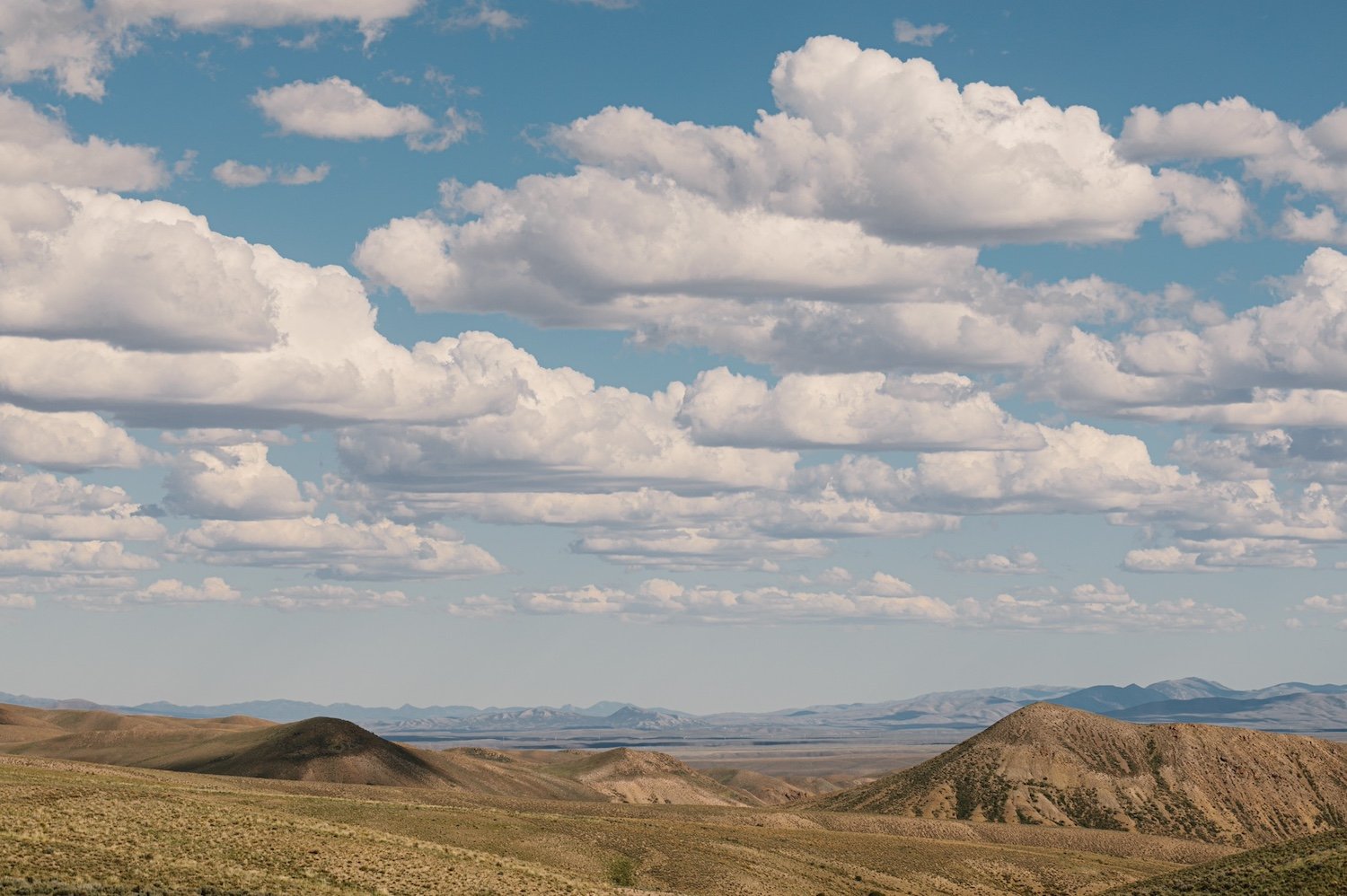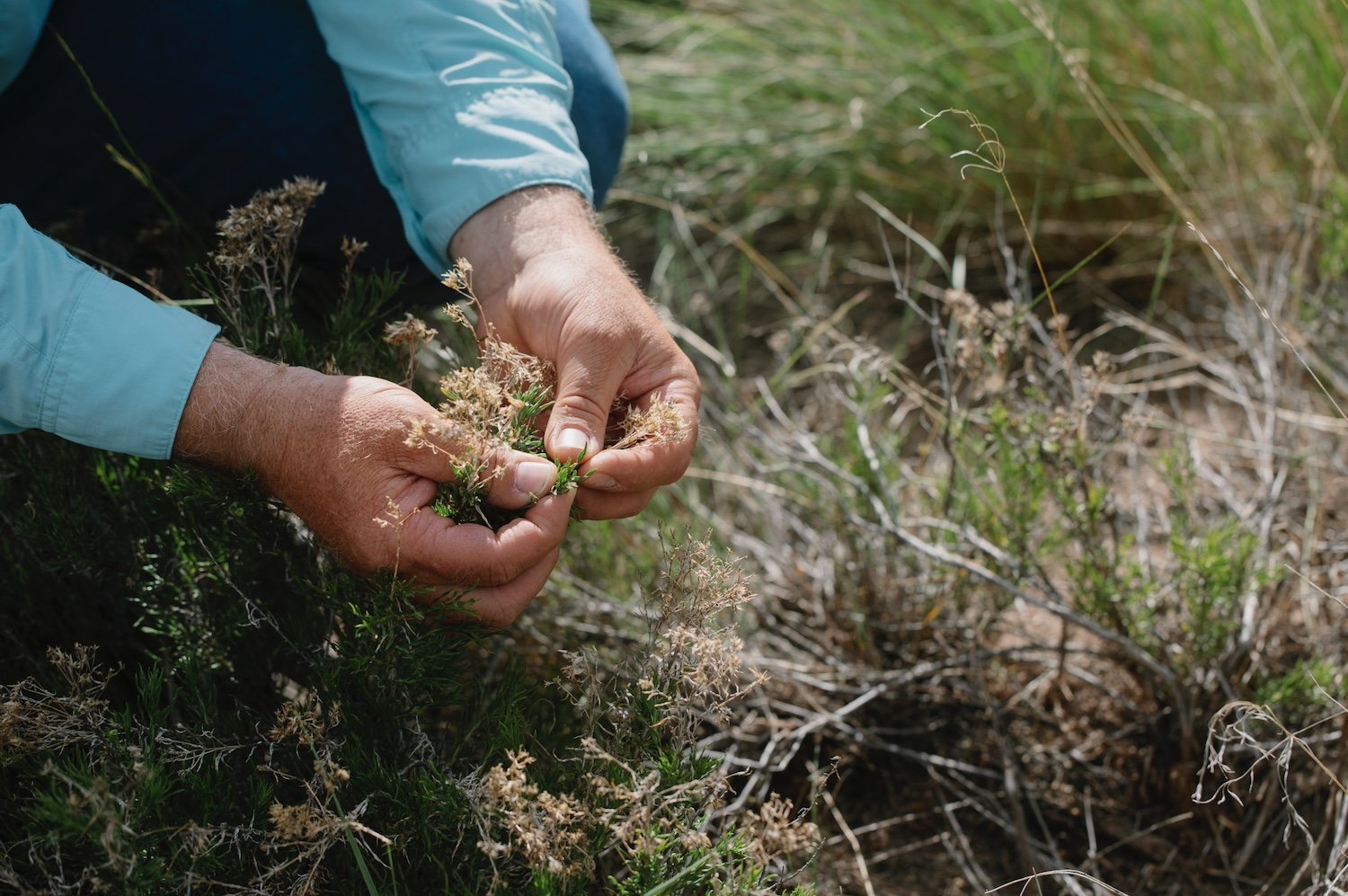Science-based and Community Built: USDA supports Sustainable Northwest’s Regenerative Ranching Program with $10 Million Grant
Imagine this: it's 5 am, and you’re up for the day, preparing to move your cattle to a different pasture on your ranch. And although this is a pretty standard practice for your herd, today is different because you’ll be moving them much further than usual. Why? Well, the next pastureland on your rotation needs a rest. In order to maintain the long-term health of the land and ensure feed for future herds, time is needed to regenerate and maintain healthy soil and plant biodiversity. It’s gonna be a long, hot, and stressful day for you and the livestock as you head to the next viable pasture, but this is the reality for countless ranchers across the Northwest. The effects of climate change, historical overgrazing, and a market dominated by a few large meatpacking companies have meant tough times for family and tribally owned ranches. As these smaller ranches begin to dwindle, so too does the availability of quality, humanely raised, pastured American beef, the beef that folks love to cook up and serve at backyard barbecues and Sunday dinners.
The complexities of the ranching industry in America aren’t new, though. It’s common knowledge that livestock and agricultural practices have a substantial carbon footprint. According to the Food and Agriculture Organization1, livestock supply chains account for approximately 14.5% of global greenhouse gas emissions caused by human activities. Pair this stark truth with the poor animal welfare conditions ubiquitous in big factory farms and mega-industrial livestock operations, and it’s no wonder conscientious consumers have been second-guessing their beef consumption. But there’s a better way forward, and an entire team of ranchers, scientists, and conservationists are on board to help.
In 2022, in partnership with County Natural Beef (CNB) and Northway Ranch Services, we officially launched the Regenerative Ranching Program with financial support from the M.J. Murdock Charitable Trust. Designed with input from seasoned land management advisors, leading agricultural science and business experts, and ranchers themselves, of course, the program aims to collectively develop and implement regenerative ranching practices that are good for beef producers and good for the land. It’s the largest regenerative ranching program in the West, with over 120 participating ranches covering 7 million acres of private and public land in Arizona, California, Colorado, Hawaii, Idaho, Montana, Nevada, Oregon, Washington, and Wyoming. The program has BIG but achievable goals, and our science-based approach helped us secure a $10 million grant from the U.S. Department of Agriculture for a five-year pilot to ground truth it – from 2023 through 2027. Let’s dig into what this all means for the ranching industry, the planet, and healthy animals and food production.
What is Regenerative Agriculture?
At the core of our initiative to develop a climate-smart regenerative beef production program is regenerative agriculture. But what is this exactly? The term was coined back in the 1980s by Robert Rodale of the Rodale Institute as a way to differentiate between “sustainable” agriculture practices and an approach that goes beyond this, encouraging a more harmonious relationship with the land. Regenerative agriculture is by no means a 20th-century philosophy, however. Indigenous peoples of North America have been using regenerative methods for hundreds of years. From prescribed burns used to promote new plant growth to intercropping that improves crop yield and soil health, we can learn a lot from tribal land stewardship. Regenerative agriculture practices consider not only the soil, air, and water but also how plants, animals, and humans are interconnected and part of the agricultural system.
Marissa Taylor from our partner Northway Ranch Services was spot on when she defined “regenerative” as “any practice, process or management technique that increases the function of the systems on which it relies.” Regenerative ranching applies the principles of regenerative agriculture specifically to the industry. With regenerative ranching, we’re really focused on developing a comprehensive approach that works with the ecosystem, not against it.
The Science-based Approach of the Regenerative Ranching Program
Sustainable Northwest's Regenerative Ranching Program utilizes a science-based approach to regenerative agriculture. It assesses the entire ranching system, creating and testing strategies to produce beef in harmony with nature. We first collect baseline data for every ranch enrolled in the program by mapping their rangelands and assessing soil samples. Soil helps determine the overall health of each ranch since it’s the foundation for everything from water retention to plant biodiversity to carbon sequestration. We then collaborate with each rancher to identify specific goals and objectives and develop a tailored plan to help them make improvements. Each ranch has unique challenges, so this customized approach is important to the initiative's overall success. After all, what works in Montana might not work in Arizona. And ranching at higher elevations is different than ranching at lower elevations. Local conditions, climate, and soil type are always taken into consideration. But the plan will be based around the following regenerative ranching principles:
Rotating cattle from pasture to pasture to prevent overgrazing and help build soil coverage
Using natural fertilizers and pest control whenever possible instead of products that could be harmful to the environment
Planting native plants to aid in biodiversity and erosion control
Promoting native birds and insects by minimizing chronic disturbances
Removing invasive conifers to decrease wildfire risk and improve water infiltration
Efficiently managing water resources to improve infiltration rates and protect water quality
As these regenerative practices are implemented, key indicators will be monitored in the short and long term to track how regenerative methods impact ranch lands. Here are the measurements we will track over the five years of this grant:
Organic matter or the amount of living organisms in the soil. This can be used to indicate soil health.
Water infiltration or the rate at which water infiltrates the soil. This can be used to indicate soil health, specifically how well the soil can support organisms.
Bare ground or the amount of ground void of grasses and deep-rooted perennials. This can be a factor in water retention and levels of organic carbon in the soil.
Carbon sequestration or the amount of carbon stored in the soil. This can help offset the carbon intensity of beef product production.
Plant biodiversity or the variety of plants in a given area. This contributes to soil health and helps create nutrient-rich feed for cattle.
The Power of a Community-built Program
Ranchers, scientists, and conservationists haven’t historically seen eye-to-eye on how best to manage lands. The strength of the Regenerative Ranching Program is that it brings everyone to the table with the common goals of learning together, expanding ecological literacy, and nurturing genuine curiosity from every perspective. This collaborative approach and focus on shared knowledge has resulted in huge gains in project implementation, monitoring, and reporting.
Every partner organization and beef producer is critical to the success of the program and brings their own strengths to the effort. Our Peer-to-Peer learning networks are a perfect example of this, connecting ranchers directly with other ranchers so they can share resources, create community, and engage in ongoing dialogue as they tackle mutual challenges. These localized, member-led rancher groups offer space for trusted knowledge-sharing and hands-on group learning, which makes a huge impact on the success of local conservation efforts.
Regardless of background or experience, every team involved in the regenerative ranching undertaking believes that improved land and animal stewardship is achievable through sound science and strong community. Whether you’re talking with a rangeland ecologist, an agricultural data analyst, or a 4th-generation rancher, they all agree that quality, healthy beef can—and should—be made in harmony with nature.
Our lineup of trusted partners includes:
The Next Generation of Climate Action
At the end of the five-year period, we estimate our project will have resulted in:
Regenerative grazing practices being implemented on all 120 enrolled ranches covering seven million acres of public and private rangelands.
Demonstration of reduced carbon intensity of beef production by 50-100% compared to conventional options.
Improved carbon sequestration to soil and a reduction of greenhouse gas emissions on project operations. (This is equivalent to emissions from consumption of one billion gallons of gasoline or 10 billion pounds of coal!)
$67 million provided in annual increased market returns for participating producers
Encouraging ranchers to move away from traditional ranching methods to regenerative ones will take time, but this grant allows for a strategic and methodical approach rooted in results. The hope is that more and more ranchers see the benefits of climate-smart ranching practices and that together, we can produce good food that supports a healthy planet, a sustainable economy, and a bright future for the next generation.
“This is the next generation of climate action,” says Dallas Hall Defrees, the Regenerative Ranching Program Director for Sustainable Northwest.
Sources:
1 - Food and Agriculture Organization https://www.fao.org/family-farming/detail/en/c/1634679/
Photo Credits: Stockpot Collective




